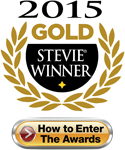Walker Sands Communications
Company: Walker Sands Communications, Chicago, IL
Company Description: Walker Sands is a full-service digital marketing and public relations firm for technology business-to-business companies. With offices in Chicago and San Francisco, Walker Sands was founded in 2001 to provide data-driven marketing support for a wide array of companies with the business mission of providing best-in-class communications counsel and services.
Nomination Category: Corporate Communications, Investor Relations, & Public Relations Categories
Nomination Sub Category: Communications or PR Campaign of the Year - Marketing - Business-to-Business
Nomination Title: The InterCall Mobile Conferencing Study
Tell the story about this nominated campaign since January 1, 2014 (up to 650 words). Focus on specific accomplishments, and relate these accomplishments to past performance or industry norms.
InterCall is the world’s largest conferencing provider, supporting more than 20 billion conferencing minutes from nearly 200 countries around the globe. Despite its status among elite conferencing providers and a high level of recognition by enterprise executives, very few consumers/everyday employees had ever heard of InterCall. With the desire to increase its brand awareness among everyday employees in the most cost-effective way possible, InterCall engaged Walker Sands Communications to conduct a national media relations campaign.
With the goal to generate as much mainstream coverage as possible, Walker Sands knew it needed to create an interesting piece of content that everyday employees could relate to. With this in mind, Walker Sands decided to do a data study of 1,000 full-time employees to determine the answer to the question “What do people really do during conference calls?”
To get the data, Walker Sands drafted a survey and used a third-party polling vendor to survey 1,000 full-time employees. The data did not disappoint. Respondents were honest about their conferencing habits, admitting to using their mobile freedom to multi-task in both traditional and very non-traditional ways. Employees noted their ability to do other work, check social media, online shop, and handle household chores while on conference calls. However, the best pitch material came from the more unique places people claimed to be at while “in” a meeting. This included taking calls from the beach, fitting rooms, at DisneyWorld and one respondent even admitted to conducting a conference call while chasing their dog down the street. On top of that, most interesting and even a little disturbing, the study found 47 percent of respondents had participated in a conference call while in the restroom.
With great data in hand, Walker Sands knew it needed to distribute the information to both the media and consumers in a digestible and interesting manner. Instead of going the traditional route and issuing a press release, Walker Sands created an infographic illustrating the data, as well as wrote a blog post for InterCall’s website that outlined the key findings.
Once all of the materials were created, the Walker Sands team offered Harvard Business Review an early and exclusive look at the data, which resulted in the first great placement. After HBR’s article went live, Walker Sands immediately started pitching the rest of the media, including top-tier business publications, TV and radio stations, and conferencing and telecommunication-specific outlets. Knowing the stat “47 percent of people have taken a conference call while in the restroom” would raise the most eyebrows, Walker Sands led with this angle when starting their general outreach.
Immediately after the Harvard Business Review article went live, the data and report quickly spread across all target news outlets and social media channels. Top-tier media placements included The Wall Street Journal, which used it in 5 different articles over the course the next two weeks, as well as the Harvard Business Review, Forbes, VentureBeat, The Atlantic, AOL, Inc.com, CIO, Business Insider and more. CNBC even created its own graphics to run on air during its primetime TV slot and Al Roker and friends discussed the data on the “TODAY” show the morning after the study was released.
Overall the campaign resulted in 114 top-tier media placements and 350+ placements overall. In total, the campaign generated 371 million impressions, most of which included InterCall’s: InterCall, the world’s largest conferencing provider” tagline. The Harvard Business Review’s initial story received so much attention that the editor asked InterCall to provide a follow-up contributed article. We used that opportunity, as well as many interviews throughout the campaign, to discuss how businesses could use this information to improve their conferencing processes. The data was fun and interesting but the lessons could be real. More engaging meetings could be more productive meetings, no matter where they took place.
In bullet-list form, briefly summarize up to ten (10) of the chief features and results of this nominated PR program since the beginning of 2014 (up to 150 words).
• Surveyed 1,000 full-time employees to see what they were really doing on conference calls.
• Created blog post, infographic and slideshare to display findings in a visually appealing format.
• Raised InterCall brand awareness through 114 top-tier media placements and more than 350 placements overall, most including the tagline, “InterCall, the world’s largest conferencing provider.”
• Top-Tier placements included the Harvard Business Review, CNBC TV, Forbes, VentureBeat, The Atlantic, AOL, Inc.com, CIO, Business Insider and more.
• Al Roker and friends discussed the data on the “Today” show.
• CNBC created graphics on the data to run during a primetime TV slot.
• The Wall Street Journal used the data in 5 different places across their publication.
• Used placements and interviews to discuss how businesses could use this information to improve their conferencing processes.
• Harvard Business Review article received so much traffic they asked for a follow-up article explaining how to conduct more effective conference calls.













